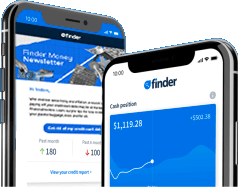Your income is an important factor in qualifying for a loan. Some lenders may have a minimum requirement you need to meet in order to apply, while others just ask that you provide proof you’re able to afford the loan. However, other aspects of your personal finances like your monthly bills and credit score can be just as important — if not more.
What is the minimum income required to get a personal loan?
There isn’t one set minimum to take out a loan. The requirements vary by lender and how much you need to borrow.
Even though many lenders have no minimum income requirement, they’re still assessing other aspects of your financial situation to see if you’re capable of handling a loan. A big factor that comes into play here is your debt-to-income (DTI) ratio.
Where do I find a lender’s minimum income requirements?
If there’s a minimum income requirement for a specific provider, it’ll be listed on our review. You can browse all of ourpersonal loan reviews in our provider directory.
If you’re comparing on your own, each provider’s website will list eligibility requirements. If income isn’t on that list, the provider may not have a set requirement. Feel free to call customer service to inquire further.
What income do I need to earn to be eligible?
Here are the income requirements for a selection of top online providers:
MoneyLion |
Personal loan |
No minimum, credit requirements apply |
|
Unsecured personal loan |
No minimum, must have proof of taxable income |
||
Personal loan |
No minimum, must have steady employment and good to excellent credit |
||
Unsecured Personal Loan |
$25,000 annually |
||
Unsecured personal loan |
No minimum, must have a low DTI ratio to be considered |
||
Laurel Road |
Personal loan |
Recommended annual income of $60,000+ and DTI ratio under 40% |
|
Unsecured personal loan |
No minimum |
||
Auto loans |
No minimum, income is one of many factors for approval |
||
Express personal Loan |
No minimum, its one of many factors — including your credit score and DTI ratio — that determines the approved loan amount |
||
Auto loan, mortgage loan |
No minimum, must have DTI ratio under 43% |
||
Citibank |
Personal Loan |
$10,500 annually |
|
Unsecured and secured personal loans |
Income is a factor in the approved loan amount, must have a DTI ratio under 49% |
||
Personal loans, unsecured lines of credit |
No minimum, one of several factors considered in approval of loan amount |
||
Personal loan |
N/A |
||
Personal loan |
No minimum |
How can I tell how much I can borrow?
The first step to determining your borrowing power iscalculating whether or not you can actually afford it. Work out your repayments based on the interest rate, fees, loan amount and loan term of your chosen personal loan. After you’ve done this, determine whether you’ll be able to manage the repayments on your current budget.
Calculate how much you can borrow
What is a debt-to-income ratio?
Your DTI ratiois a simple measurement of your monthly debt compared to your gross monthly income. This lets lenders see how you’ve managed payments for what you’ve borrowed. Typically, borrowers that have a high debt-to-income ratio will likely have trouble making payments.
Borrowers with a DTI ratio over 43% are generally considered to be going through a financial hardship.A DTI ratio of 20% or lower is generally considered excellent.
Let’s say you have a total of $2,500 in bills each month and you make a salary of $9,000 a month. Your DTI ratio is about 28%, which would classify you as a relatively responsible borrower.
How do lenders decide if I’m eligible?
When you submit a loan application, the lender will inquire about several details. These may include:
- Income
- Employment status
- Current debt
- Expenses
- Financial commitments
- Credit history
- Assets you can offer as security
What if I’m not qualified?
Here’s what you can do if you find out you don’t meet the minimum income requirements:
- Apply for a lower amount.If you can’t prove to the lender that you’ll be able to manage repayments for the requested loan amount, consider borrowing less. This will mean lower repayments for you and less of a risk for the lender.
- Choose a more affordable loan.The reason you might be ineligible could be that the loan has fees and interest that the lender thinks is too expensive for you. Other loans may have lower interest rates and fewer fees, and in turn will give you a better chance of managing the repayments.
- Try your current bank.If you have a good banking history, you probably have a better chance of being approved for a loan with your current bank. You may be able to find product details on your bank’s website.
Bottom line
How much you need to earn to get a loan depends on how much you want to borrow. Generally, the higher your income, the more you’re able to borrow.
However, other factors like your credit score and DTI can play a crucial role in whether or not you’re approved — and how much you can borrow. You can find out more about how personal loans work byreading our guide.
Frequently asked questions
Ask a question
2 Responses
More guides on Finder
-
Reprise Financial vs. OneMain Financial: Which is Better?
Considering a loan from Reprise Financial or OneMain Financial? Check out our side-by-side comparison first.
-
Large Personal Loans Over $50K, $100K and More
$50K+ personal loans exist, but most borrowers don’t know where to find them. Do you?
-
Pennie Financial Loans Review: Avoid This Misleading Company
A review of Pennie Financial, a company that appears to be a personal loans marketplace but likely shares your information with debt settlement partners.
-
Guaranteed Approval Loans for Bad Credit: Where to Apply?
Legit lenders don’t offer guaranteed approval loans, but some options come pretty close if you can meet the lenient requirements to qualify.
-
Reprise Financial: Legit But Be Wary of Changing Terms
Get personal loans fast, but be aware: loan terms may vary from what’s advertised.
-
BHG Financial Personal Loans: Good for High Income Borrowers
Bankers Healthcare Group isn’t just for licensed healthcare workers. Compare large loans up to $200,000 with this legit online lender.
-
Best Debt Consolidation Loans
Compare 11 lenders to find one that’s a good fit for your needs.
-
Personal Loans and Grants for Felons
Loan and grant opportunities for people with a felony, what you need to qualify for loans and other resources for people who were formerly incarcerated.
-
Best Personal Loans for Bad Credit Scores Under 600
Secured and unsecured personal loans for credit scores below 580.
-
Eloan Personal Loans Review
With Eloan take advantage of a convenient online application, but be wary of potential scams.


I have been turned down for a personal loan. My credit score is 703, I’ve had credit for over a year and they said my debt to income ratio is too high. I have no debt except for a $25 a month minimum payment, what can I do?
Hi,
Thank you for your comment.
Most lenders typically say the ideal front-end ratio should be no more than 28%, and the back ratio, including all expenses, should be 36% or lower. However, depending on credit score, savings and down payment, lenders accept higher ratios. And this will vary per lender, so it’s best to inquire from a lender first before submitting an application for a loan.
Regards,
Jhezelyn